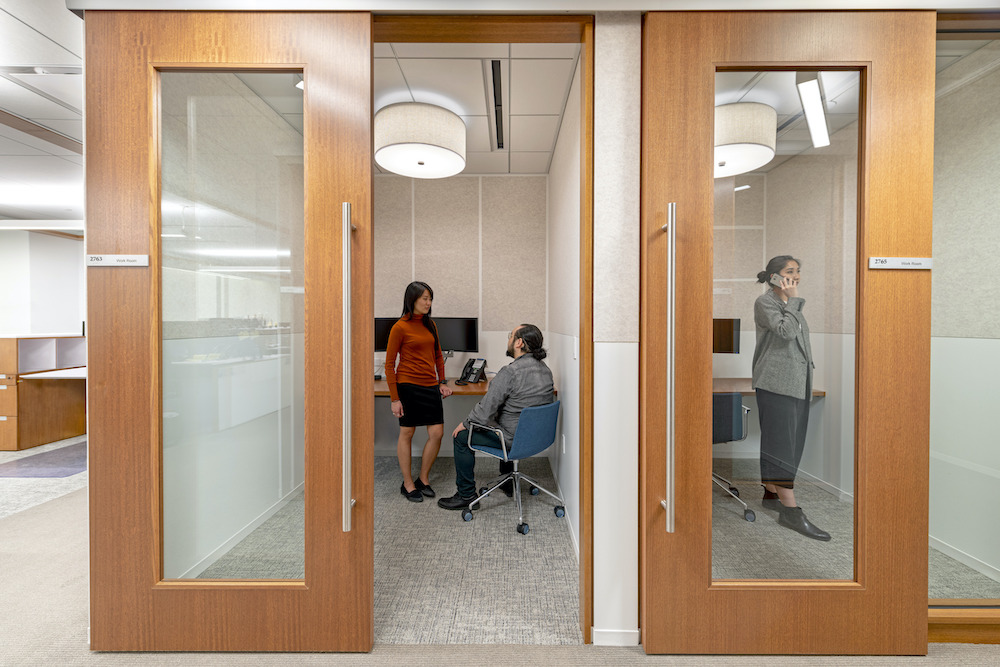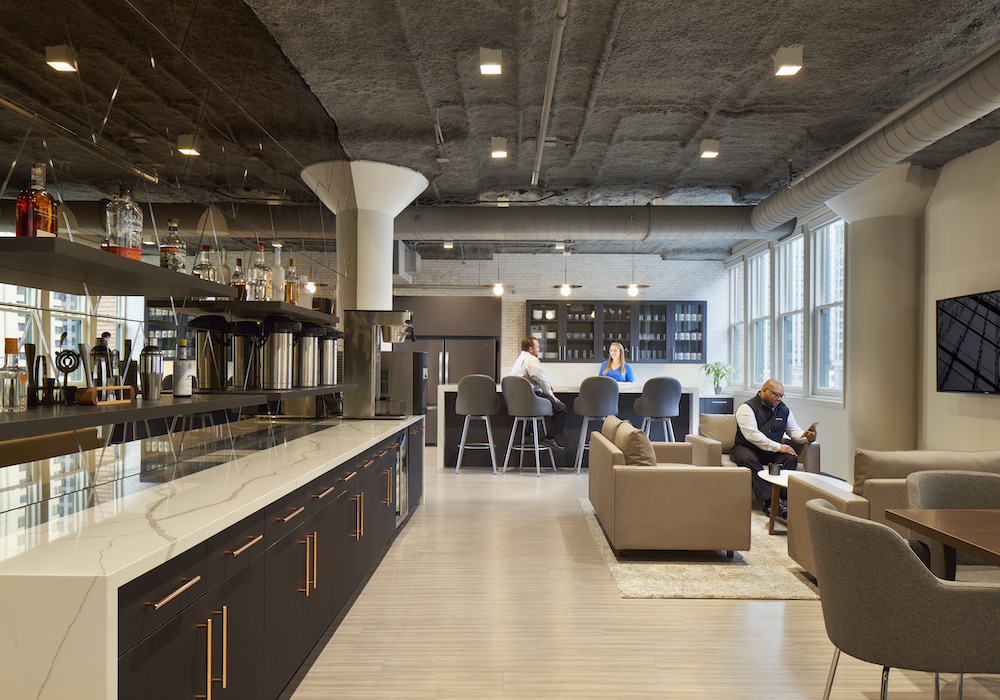Deborah Nemeth of SmithGroup shares how inspiration from higher education and hospitality can help inform the next evolution of the law office.
The pandemic forever and fundamentally changed the future of the office and how we approach work across industries and markets. Law firms are no exception. As linear models of office and home have faded away, the law office has evolved into a central hub in a workspace ecosystem, becoming one of many places where attorneys can choose to do their work. With the work-from-anywhere modality continuing to gain momentum, lines are blurring across industries with a natural convergence of many market sectors into the world of work. Here’s how we are applying insights gleaned from two industries to help inform the next evolution of the law office.
Higher Education
With law school enrollment on the rise and a competitive job market ahead, firms can learn a lot from higher education institutions as they set out to attract the next generation of lawyers to their practices.

Hospitality
Attorneys have become accustomed to the comforts of home while working remotely during the pandemic. As a result, there has been a natural progression to evolve the law office into a more hospitality-focused environment.
Learning from Gen Z and Their College Experience
Certainly, firms need to be competitive in many ways if they are to attract and retain top law school graduates. But as Generation Z begins to enter the workforce, organizations across the board—including law firms—must be prepared to embrace a new population of employees that view and prioritize work differently than their predecessors. Here’s why.
Changes in teaching pedagogies have played a large role in shifting students’ mindsets and expectations regarding the workplace. Today, law students are immersed in and trained through highly interactive educational experiences that take place in a variety of active learning classrooms and environments. Lectures that were once held in vastly oversized rooms with stadium-style seating and a professor behind a podium, now happen remotely from outside the classroom, while in-person class time is focused on applied learning and group problem-solving. New attorneys crave connection and mentorship as essential to their growth in professional practice. This combination of factors has led firms to create more collaboration and social spaces within their law offices. These spaces include lounges, teaming areas and huddle rooms where attorneys can meaningfully connect and come together for group thinking and problem-solving activities that foster camaraderie and growth.

The higher education institutions that students have called home for the last several years also prioritize the incorporation of daylight into classrooms. While law students have become accustomed to this feature, studies focused on equitable access to light and views to nature have repeatedly proven positive cognitive outcomes. When exploring law office planning concepts, designers should seek to provide as much universal access to daylight and views as possible. This can be achieved by placing collaboration and community social zones—as opposed to private offices—near windows and areas that enable everyone to enjoy the best views from within the office.
A New Take on Hospitality
As many of us became accustomed to the comforts of home, a hospitality-centric space is another key driver for the future law office. While these trends were emerging pre-2020, they were fast accelerated by the pandemic.
Now, as the law office is the center of a broader workspace ecosystem for attorneys, there is a draw to more hospitality-like features in addition to a heavier priority on health and well-being. This manifests in law offices designed as large open café spaces and hotel-like bar areas to host clients and firm gatherings. These spaces are infused with a variety of seating types much like one would see in a coffee shop or hotel lobby, with an emphasis on soft seating.

Long gone are the days of dark, dated interior finish palettes with heavy wood accents. Law firms are opting for rich but airy finish palettes, taking on an aesthetic more like that of the hottest new restaurants and hotel spaces with an emphasis on modern, sophisticated accents.
With a greater focus on wellness and well-being, it is important for law offices to include access to amenities and spaces that support an employee’s holistic health and welfare. Much like in hospitality environments, consider the proximity of outdoor space to the law office—whether it is a directly adjacent outdoor patio, roof terrace, or nearby park or gathering space.
As we move into the next evolution of the workplace, industries will continue to converge and together inform the workplace of the future. As law firms fight for top new talent and strive to attract and retain existing talent, merging elements from higher education and hospitality industries will help their practice evolve to the next future.


